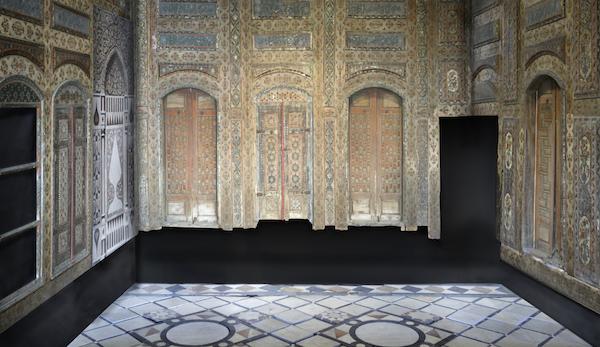
When Saudi Arabia’s King Abdulaziz Center for World Culture opens next year, it will be the lucky recipient of a loan comprising upwards of 130 objects from the Islamic art collection of the Los Angeles County Museum of Art, including the never-before-exhibited Damascus Room, reports the Los Angeles Times.
The museum first looked into adding the 15-by-20-foot room to its collection in 2011, as Syria’s still-ongoing civil war was just breaking out. As Linda Komaroff, curator and head of the museum’s department of art of the Middle East, wrote in 2012 for LACMA’s Unframed blog, LACMA made the acquisition with the belief that “helping to preserve a small part of the cultural history of one of the world’s oldest, continuously occupied cities” was part of the mandate of an encyclopedic institution.
Dating to 1766, the room was for receiving guests in the home of an upper-class family. It belonged to one of the many historic Damascus residences that were torn down in the latter half of the 20th century as the city modernized. In this instance, the interior was dismantled intact when the home was demolished in 1978 to make way for a new road.
Among the room’s ornate decorations are multicolored inlaid marble floors, intricately painted and carved wooden walls and doors, and a richly decorated wall fountain. A large stone arch bisects the room into upper and lower sections, separated by a large step.
Rendering of the King Abdulaziz Center for World Culture.
Photo: © MIR
Since the acquisition was finalized last spring, the room has been carefully restored, thanks in part to funding from the Abdulaziz Center and the Los Angeles’s Friends of Heritage Preservation. The final steps will include recreating the velvet cushions that lined the room’s low couches and creating a custom-built armature that will facilitate the assembling and disassembling of the room, allowing it to be displayed with ease in various locations.
The Damascus Room will make its public debut in Saudi Arabia next March, where it will be on view for two years before returning to the States. Among the other objects included in the loan are an Ottoman box decorated with tortoiseshell and mother-of-pearl, a portrait of a Mughal prince, and a glass lamp with an inscription from the Koran on its gilded and enameled surface. The opening of the Abdulaziz Center, funded by the national oil company Saudi Aramco, will mark the culmination of nearly eight years of construction in Dhahran.